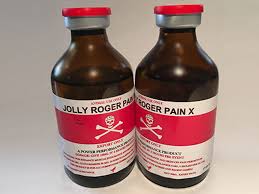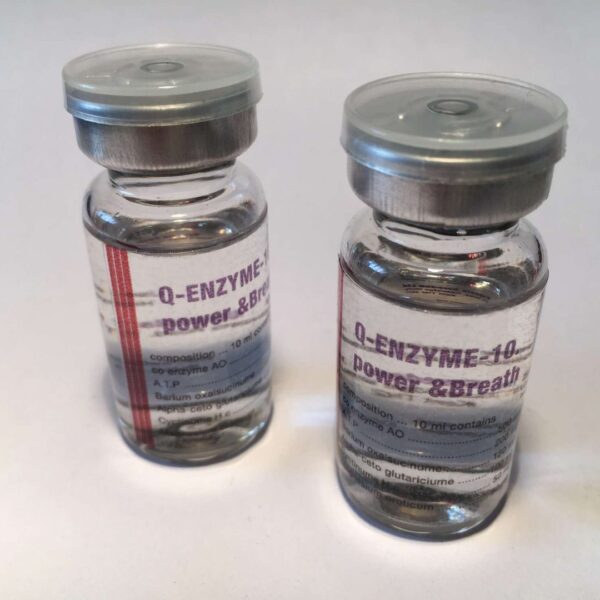Legend Equine 2 mL 10 mg
Legend Equine 2 mL 10 mg (hyaluronate sodium) Injectable Solution is a clear, colorless solution of low viscosity. Legend Injectable Solution is pyrogen free, sterile and does not contain a preservative. It is administered by intravenous or intra-articular injection. `
Hyaluronic acid, the conjugate acid of hyaluronate sodium, is extracted from the capsule of Streptococcus spp. and purified, resulting in a form which is essentially free of protein and nucleic acids.
Legend Injectable Solution is supplied in 2 mL (20 mg) vials. Each mL contains 10 mg hyaluronate sodium, 8.5 mg sodium chloride, 0.223 mg sodium phosphate dibasic, and 0.04 mg sodium phosphate monobasic. The pH is adjusted to between 6.5 and 8.0 with sodium hydroxide or hydrochloric acid.
CHEMISTRY:
Hyaluronic acid, a glycosaminoglycan, can exist in the following forms depending upon the chemical environment in which it is found: as the acid, hyaluronic acid; as the sodium salt, sodium hyaluronate (hyaluronate sodium); or as the hyaluronate anion. These terms may be used interchangeably but in all cases, reference is made to the glycosaminoglycan composed of repeating subunits of D-glucuronic acid and N-acetyl-D-glucosamine linked together by glycosidic bonds. Since this product originates from a microbial source, there is no potential for contamination with dermatan or chondroitin sulfate or any other glycosaminoglycan.
CLINICAL PHARMACOLOGY:
Hyaluronic acid is a naturally occurring substance present in connective tissue, skin, vitreous humour and the umbilical cord in all mammals. High concentrations of hyaluronic acid are also found in the synovial fluid. It also constitutes the major component of the capsule of certain microorganisms. The hyaluronic acid produced by bacteria is of the same structure and configuration as that found in mammals.
The actual mechanism of action for hyaluronate sodium in the healing of degenerative joint disease is not completely understood. One major function appears to be the regulation of normal cellular constituents. This effect decreases the impact of exudation, enzyme release and subsequent degradation of joint integrity. Additionally, hyaluronate sodium exerts an anti-inflammatory action by inhibiting the movement of granulocytes and macrophages.1
Hyaluronate molecules are long chains which form a filter network interspersed with normal cellular fluids. It is widely accepted that injection directly into the joint pouch enhances the healing of inflamed synovium by restoring lubrication of the joint fluid. This further supplements the visco-elastic properties of normal joint fluid.
Legend
Package insert / prescribing information
Generic name: hyaluronate sodium
Dosage form: FOR ANIMAL USE ONLY
On This Page
For Intravenous or Intra-Articular Use In Horses Only
CAUTION:
Federal law restricts this drug to use by or on the order of a licensed veterinarian.
DESCRIPTION:
Legend® (hyaluronate sodium) Injectable Solution is a clear, colorless solution of low viscosity. Legend Injectable Solution is pyrogen free, sterile and does not contain a preservative. It is administered by intravenous or intra-articular injection. `
Hyaluronic acid, the conjugate acid of hyaluronate sodium, is extracted from the capsule of Streptococcus spp. and purified, resulting in a form which is essentially free of protein and nucleic acids.
Legend Injectable Solution is supplied in 2 mL (20 mg) vials. Each mL contains 10 mg hyaluronate sodium, 8.5 mg sodium chloride, 0.223 mg sodium phosphate dibasic, and 0.04 mg sodium phosphate monobasic. The pH is adjusted to between 6.5 and 8.0 with sodium hydroxide or hydrochloric acid.
CHEMISTRY:
Hyaluronic acid, a glycosaminoglycan, can exist in the following forms depending upon the chemical environment in which it is found: as the acid, hyaluronic acid; as the sodium salt, sodium hyaluronate (hyaluronate sodium); or as the hyaluronate anion. These terms may be used interchangeably but in all cases, reference is made to the glycosaminoglycan composed of repeating subunits of D-glucuronic acid and N-acetyl-D-glucosamine linked together by glycosidic bonds. Since this product originates from a microbial source, there is no potential for contamination with dermatan or chondroitin sulfate or any other glycosaminoglycan.
CLINICAL PHARMACOLOGY:
Hyaluronic acid is a naturally occurring substance present in connective tissue, skin, vitreous humour and the umbilical cord in all mammals. High concentrations of hyaluronic acid are also found in the synovial fluid. It also constitutes the major component of the capsule of certain microorganisms. The hyaluronic acid produced by bacteria is of the same structure and configuration as that found in mammals.
The actual mechanism of action for hyaluronate sodium in the healing of degenerative joint disease is not completely understood. One major function appears to be the regulation of normal cellular constituents. This effect decreases the impact of exudation, enzyme release and subsequent degradation of joint integrity. Additionally, hyaluronate sodium exerts an anti-inflammatory action by inhibiting the movement of granulocytes and macrophages.1
Hyaluronate molecules are long chains which form a filter network interspersed with normal cellular fluids. It is widely accepted that injection directly into the joint pouch enhances the healing of inflamed synovium by restoring lubrication of the joint fluid. This further supplements the visco-elastic properties of normal joint fluid.
Legend Equine 2 mL 10 mg INDICATIONS:
Legend® (hyaluronate sodium) Injectable Solution is indicated in the treatment of joint dysfunction of the carpus or fetlock in horses due to non-infectious synovitis associated with equine osteoarthritis.
CONTRAINDICATIONS:
There are no known contraindications for the use of Legend® (hyaluronate sodium) Solution in horses.
RESIDUE WARNING:
Do not use in horses intended for human consumption.
HUMAN WARNINGS:
Not for use in humans. Keep this and all other drugs out of reach of children.
Legend Equine 2 mL 10 mg PRECAUTIONS:
Radiographic evaluation should be carried out in cases of acute lameness to ensure that the joint is free from serious fractures. As with any intra-articular treatment, special precautions must be followed as to injection technique and sterility for prevention of possible swelling or infection. Intra-articular injections should not be made through skin that has been recently fired or blistered, or that has excessive scurf and counterirritant on it.
The safety of Legend Injectable Solution has not been evaluated in breeding stallions or in breeding, pregnant or lactating mares.
ADVERSE REACTIONS:
No local or systemic side effects were observed in the clinical field trials with either intravenous or intra-articular injections.
Post-Approval Experience: While all adverse reactions are not reported, the following adverse reactions are based on voluntary post-approval reporting:
Following intravenous use: Occasional depression, lethargy, and fever.
Following intra-articular use: lameness, joint effusion, joint or injection site swelling, and joint pain.





Reviews
There are no reviews yet.